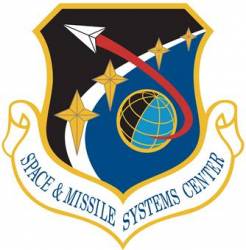
GPS program managers are looking for small firms with a fresh take on technologies ranging from handheld M-code receivers and cybersecurity solutions to ground infrastructure and satellite payloads.
GPS program managers are looking for small firms with a fresh take on technologies ranging from handheld M-code receivers and cybersecurity solutions to ground infrastructure and satellite payloads.
To help connect with potential new contractors, the Air Force Space and Missile Systems Center (SMC) is holding a Small Business Industry Day in mid-October in Los Angeles. Companies chosen will have a chance to brief senior government representatives, major defense contractors, and other small businesses on their specific capabilities. Attendees will also learn about potential prime contractor business opportunities coming up with SMC.
In order to be chosen, however, companies must submit white papers describing their capabilities as they relate to the specific technologies being sought. Companies have until July 11 to get their white papers in, with a possible benefit to submitting early. Depending on the response, said SMC, "attendance may be limited to [small businesses] that provide the most interesting white papers and/or on a first come, first serve basis."
While some space limitations may arise, there seem to be few limitations on the types of technology SMC is looking for across nine different North American Industry Classification Code System (NAICS) categories.
In satellite technology the GPS program is hoping to find a small company able to provide an alternative to their current supplier for the satellite position, navigation, and timing (PNT) payload. They have been deeply unhappy with payload development under the GPS III program. They are also looking for a payload with better anti-jam performance, improved accuracy, and signal flexibility at lower per-unit and launch costs.
On a related note, SMC also wants to find a supplier for directional satellite crosslinks that are secure, hardened, and cost less than $1 million each.
The Air Force would also like to tap into recent improvements in gallium nitride (GaN) processing to get more powerful solid state power amplifiers (SSPAs) and robust low noise amplifiers (LNAs).
"Recent improvements in Gallium Nitride (GaN) processing," the SMc wrote, "is leading to efficient and more powerful SSPAs that can replace TWTAs [traveling wave tube amplifiers] for some lower power applications."
Part of the energy behind this request is that officials want to get away from TWTAs, for which there is a lack of suppliers within the United States.
Shifting to GaN-based LNAs is also about limiting risks to the program. Using GaN provides an order of magnitude increase in the damage threshold over other materials, SMC said, which is important in the face of emerging space threats.
Program managers are also looking for space-qualified, analog-to-digital converters (ADCs) to cover the space signal bandwidths, up to a present maximum of five gigahertz. ADCs exist for ground use but not for a space environment.
On the ground, defense officials are looking for a new handheld GPS receiver, enhancements to M-code signal acquisition and tracking, and ground system improvements. That handheld eceiver should not exceed 35 cubic inches and must weigh less than 16 ounces with its batteries.
The SMC says it wants multi-element antenna systems for use with both multi-GNSS signals as well as the L1, L2, and L5 GPS signals. An ultra-stable, short-term clock that is small, light, and low power also is on the wish list.
SMC is seeking ways to improve receiver power performance and, in the long-term, better ways to deal with new spoofing threats. Officials are also looking for a next-generation GPS “crypto engine” or modernized protection device (MoPD) as an enabler for software defined radio solutions.
For the ground system SMC would like to find better software to monitor and protect against cyber-attacks. It also wants services and applications developed to support space battle management command and control (BMC2) indications and warning, space control, and the space common operating picture as well as a host of other more general space-focused arenas such as satellite communications and space control data exploitation
The entire 1,500- word wish list and information on how to respond can be found online at the Fe3deral Business Opportunities website at fbo.gov under Solicitation Number: AFSMCSBID2016.






